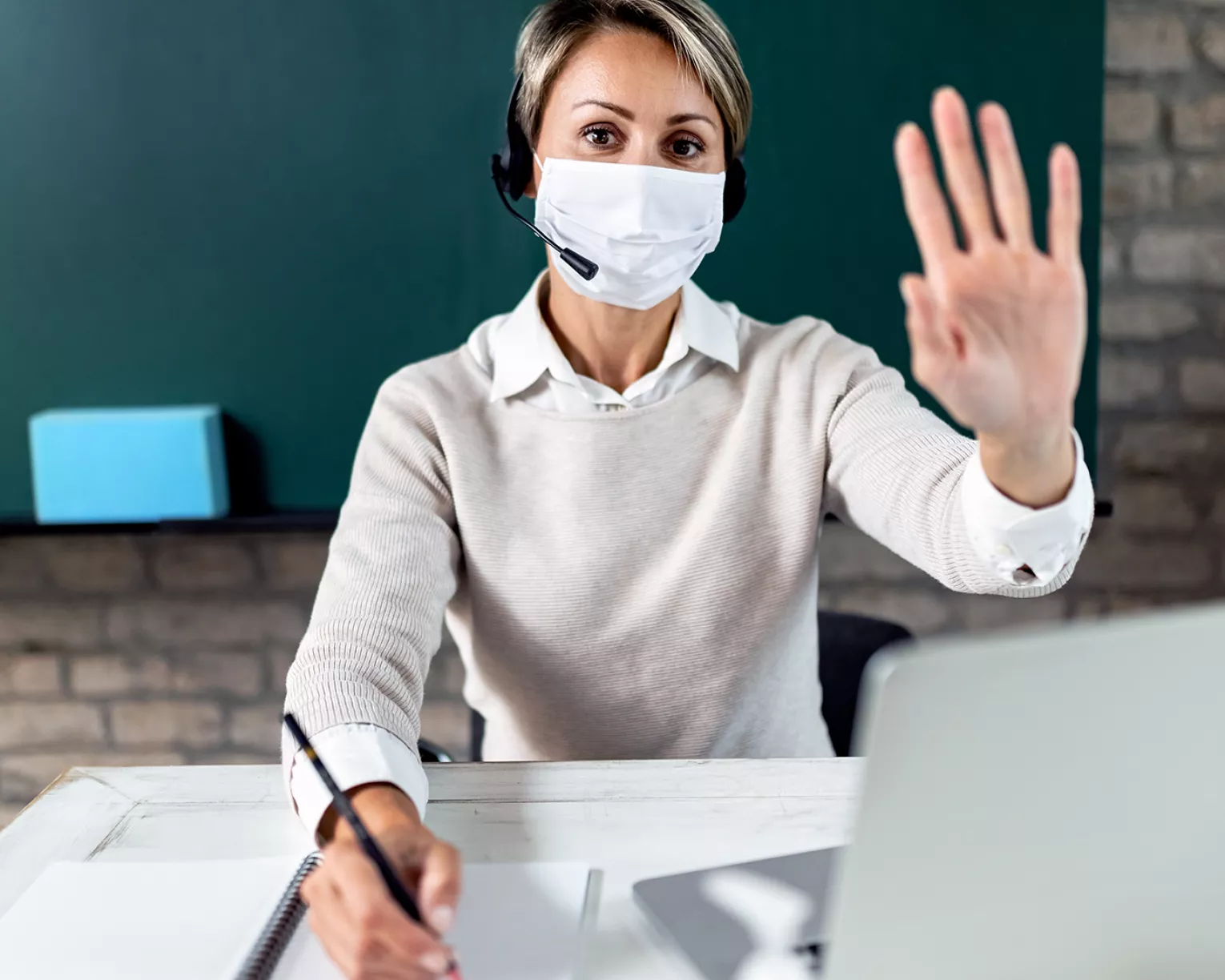A safe and positive learning environment, whether in-person or online, is essential for student learning. The resources below can help you overcome the challenges of creating an online learning environment to ensure students feel included, safe, and connected to educators and their classmates. Because the hyflex learning model may include face-to-face interaction, health and safety considerations are of utmost importance.
What is Hyflex Learning?
Hyflex learning is a modality of teaching that presents the components of hybrid or blended learning in a flexible course structure that gives students the option of attending sessions in the classroom, participating online, or both. In a hyflex learning environment:
- The student has some control over the place, path, and pace of learning;
- The student can participate face-to-face, online, or through a combination of both for synchronous, instructor-led, learning sessions;
- The student can complete offline assignments at the time, place, and pace of their choosing; and
- Educators use technology to facilitate live and recorded online instruction, communicate with students, house resources and learning materials, and serve as a portal for receiving and returning assignments.
Health and Safety Resources
CDC Toolkit for K-12 Schools links to multiple topics related to COVID-19 including the use of face coverings in schools, student screening, and strategies for protecting school staff.
Guide to SEL During COVID contains a curated list of resources to address trauma and students’ basic needs during the pandemic.
NEA All Hands on Deck provides guidance in planning for school reopening focusing on health, safety, student learning, and equity.
NEA Guidance for Meal Service provides information on continuing meal service during school closures.
NEA Webinar Safe Return to In-Person Instruction is a 90-minute webinar covering questions related to reopening, accommodations for high-risk individuals, federal leave laws, and basic protections needed for a safe reopening.
Student Screening Questionnaire can be used in the school or by families to monitor student wellness.
Communication Resources
Check-in Survey can be customized to assess the needs and well-being of students and parents.
Distance Learning Cheat Sheet is a template designed for student and family use that contains quick reference information on school contacts and how to locate and submit assignments and learning resources.
Equity Resources
Classroom resources from Teaching Tolerance provides lessons, texts, and activities emphasizing social justice and anti-bias.
Meeting Digital Needs of Underserved Families is a short video sharing tips and ideas for supporting students in their digital needs.
NEA Equity in Digital Instruction for Special Education offers guidance on meeting the needs of special education students during school closures.
NEA LGBTQ Checklist provides educators with a tool to assess their virtual classroom for LGBTQ supports.
NEA Online Checklist for Social Justice provides guidance on planning online instruction to ensure equity for all students.
UDL Apps contains a curated list of tools to support Universal Design for Learning implementation.
Community Resources
Building Community provides resources on building a nurturing online community.
Connected Learning provides six principles to build a connected online learning community.
Engagement Strategies for Online Learning is a short webinar on how to use student engagement to build community.
Virtual Back-to-School Night provides ideas and tips for hosting a successful back-to-school meeting.
Technology Resources
Apps and Websites for Learning lists free apps and websites across grade levels in a variety of content areas including music, arts, STEM, computer science, mathematics, English language arts, science, social studies, and more.
Internet Access & Devices provides information on access to tools for distance learning, such as free and low-cost Internet and devices.
NEA Protecting Privacy During Pandemic provides an overview of guidelines related to online student and educator privacy.
NEA Digital Learning Policy Statement provides NEA’s beliefs and guidance related to digital learning.
NEA Digital Supports contains multiple resources focused on pivoting to a virtual learning environment including NEA’s Remote Teaching and Learning Courses.
What is Cyberbullying? contains resources for parents and teachers on how to recognize, report, and prevent cyberbullying.
Keeping Children Safe Online provides tips for parents on how to protect children from online predators and how to report suspicious activity.
Digital Learning Agreement is a customizable document that can be used to establish norms for responsible and safe digital learning practices.
Devices for Learning is a downloadable quick reference document to share with students and parents with school-issued devices.
Join Our Movement


